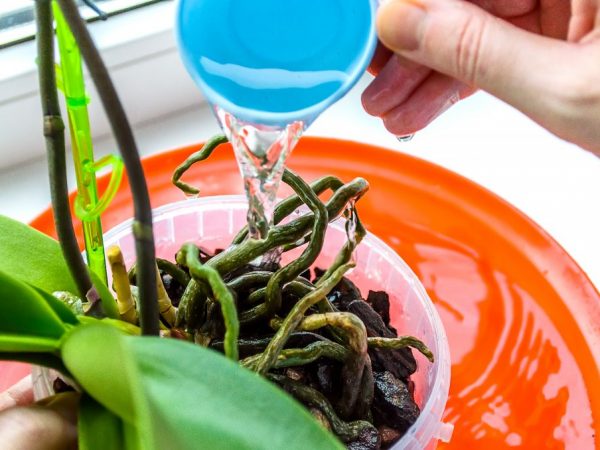Description of Phalaenopsis Zambia
There are many fans of Phalaenopsis Zambia orchids. These exotic flowers spread throughout Europe after the discovery of the continents, from where they were brought by travelers. Vivid, unusual representatives of exotic flora have been found in the tropics.

Description of Phalaenopsis Zambia
Description of the variety Zambia
The name of the flower comes from the name of the African country where this species of phalaenopsis was discovered. According to the description, the petals of the Zambia orchid have a light lilac hue, the stems and leaves are long, graceful.
Zambia is a multi-flowered plant with long peduncles collected in a cluster. The shape of the petals resembles a butterfly with spread wings, which gradually unfold during flowering. Its duration is several months. Often this orchid variety has 2 to 4 peduncles at a time.
The flowers of Zambia vary in shades from the lightest to the most intense dark. They are:
- white,
- pink,
- yellow,
- purple
- red,
- green,
- brown.
The contrasting lip among the petals emphasizes the beauty of the pattern of the tiger and netted Phalaenopsis varieties.
The life span of a plant is 10-15 years.
During the first half of the day, the plant emits a light pleasant aroma. The compact size of the bushes, the constant growth of flower-bearing formations and twigs make it possible to breed this variety at home, in greenhouses and workrooms for decorating premises and as an element of decor, as well as for sale.
Flower content
For good development and stable flowering, the orchid should be located in a place where there is an influx of fresh air, but drafts are excluded.
If the heat comes with a temperature of 35 ° C and above, the phalaenopsis is transferred to a cooler place, lightly sprayed from roots to leaves to create an optimal level of humidity. Make sure that there is no accumulation of moisture on the outlets. The room must be well ventilated.

Protect the flower from drafts
Shorter daylight hours stimulate the development of flowers. Zambia does not tolerate direct sunlight, nor should the roots be overly flooded with water, cooled and exposed to temperature extremes. The plant feels good in partial shade, like in tropical forests.
Watering
Watering should not be overused, although the orchid loves moisture. The soil substrate should be moderately moist, periodically it is necessary to dry it to prevent decay.
Zambia is watered with softened water at room temperature. In winter, watering is carried out less often, without drying out the ground.
Top dressing
Phalaenopsis Zambia is fertilized during the warm season (May-September) to provoke flowering. To do this, watering with a complex solution is carried out about once every 10 days.
Reproduction and transplantation
The transplant is carried out when the phalaenopsis outgrows the pot with the root system and as the substrate decomposes, the soil is depleted. This procedure is carried out not more often than once every 2 years.
For transplantation, a mixture of moss, pine peels, coal and soil is made.Flower cultivation is carried out with young shoots - children - or by dividing the rosette in the center. For breeding, a basal rosette with two-row fleshy leaves is used.
Summarizing
The exotic Zambia orchid variety from the phalaenopisis family is a magnificent specimen of life-loving houseplants with high decorative qualities. The orchid is propagated by dividing or grafting children. Watered in moderation, kept in a semi-dark place, where drafts are excluded.
Caring for this type of orchid is simple. It will decorate any room, add elegance and sophistication to the interior, create an atmosphere of harmony.


